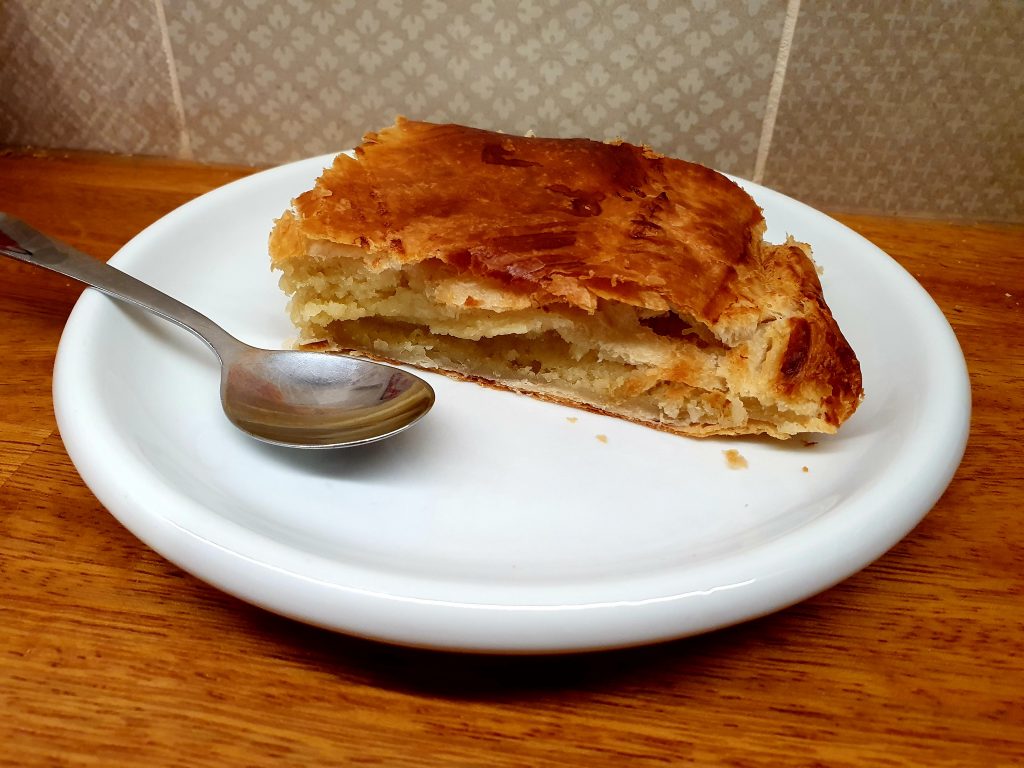It’s a bit early this year but I baked one today and thought I’d share the recipe.
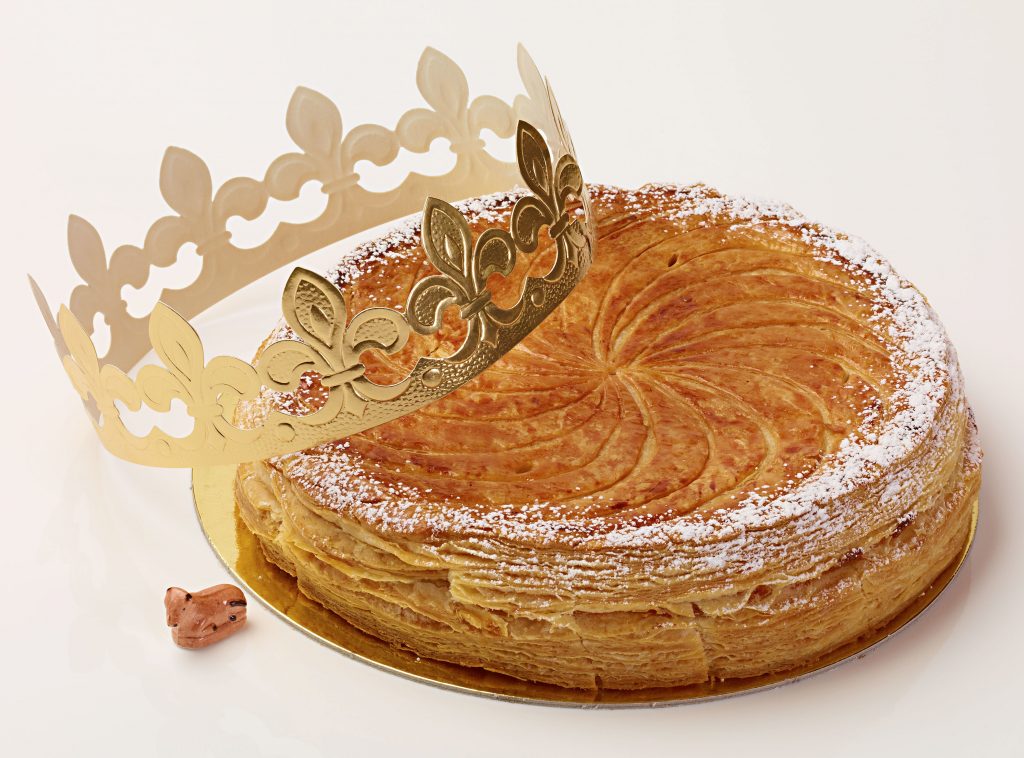
Where does it come from?
From the Middle Ages in France, the Epiphany has been celebrated with a cake: la galette des rois, literally the King’s cake. The galette differed according to the regions: for example it was made of puff pastry in Paris, but made of brioche and shaped as a crown in Provence.
The cake contains a lucky charm (une fève) which originally was a broad bean (fève means broad bean in French). Whoever found the charm in their slice of galette, becomes King or Queen.
At the beginning of the 20th century, the lucky charm started being made of china. The charm sometimes represents a religious figure such as baby Jesus, but it can be anything these days, I have a Darth Vador one for example.
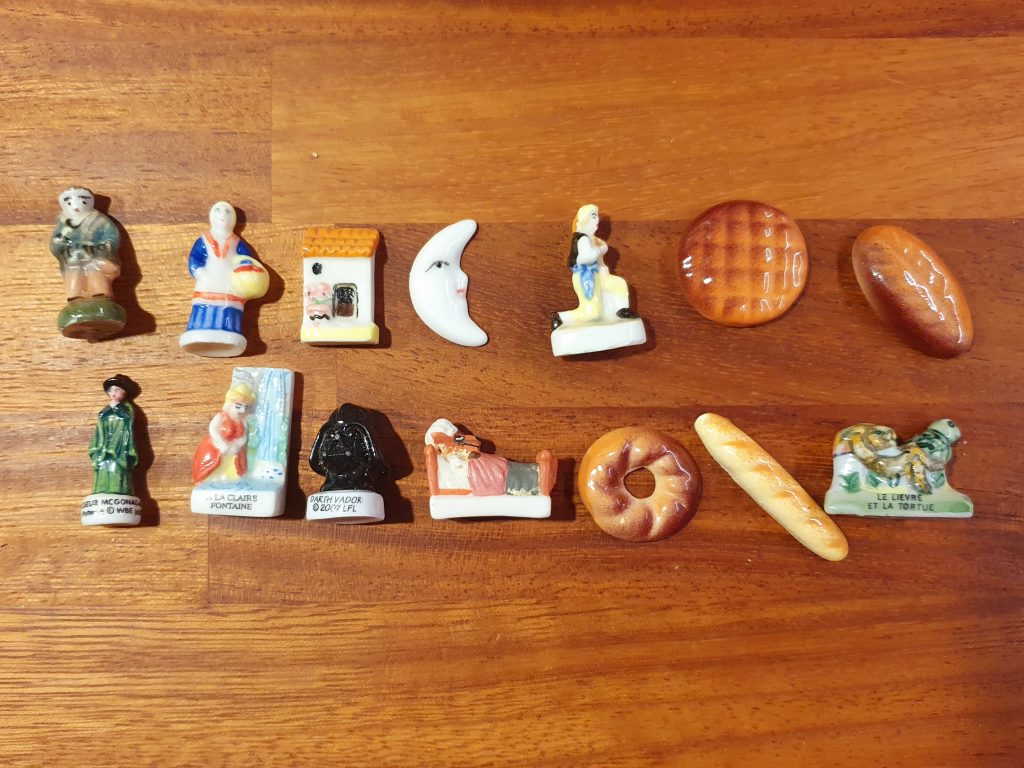
The modern Galette des Rois is made of puff pastry and can be plain or filled with frangipane. The youngest person in the room hides under the table and shouts out who should get each slice of galette. The person who finds the fève in their slice of galette becomes the King or Queen and is given a golden paper crown. The King or Queen then, has to choose their Queen or King.
Fun fact
I used to be a ‘nursery teacher’ in France and this week, all the kids in my class would have been crafting their paper crown and we would have baked 2 galettes together in class. This was me, all by myself with up to 28 children, sometimes as young as 3 years old, taking part in small groups of 5 or 6 while the others were busy with other activities in the same room. This was ….. interesting ahahaha!
Most of them were not really good at breaking eggs which end up in the bowl with no extra egg shells for example. But they were all very happy as very few kids this age are involved in baking at home.
Another challenge was to make sure no one would break a tooth on the ‘fève’ or chock on it.
In comparison, my actual job is pretty easy 😉
Recipe
There are multiple variations, here is the one I did today:
2 packs of puff pastry, preferably already rolled (about 500g in total)
For the custard:
- 1 egg yoke
- 50g of sugar
- 25g of flour
- 250g of milk
For the rest of the frangipane:
- 100g of sugar
- 80g soft unsalted butter
- 2 eggs plus the egg white left from the custard
- 200g of ground almonds
1. Make the custard:
- in a bowl, mix the egg yoke and sugar while you heat the milk in a pan
- add the flour to the bowl and mix
- use some of the warm milk to mix a bit more and add all the milk little by little
- pour the content of the bowl in the pan and keep turning until it gets thicker on medium heat – takes about 5min
- leave to cool
2. Make the frangipane:
- mix the sugar and soft butter
- add the egg white, mix
- add the two eggs and mix
- add the ground almonds
- little by little add the custard and mix
Put the galette together on some baking paper on a tray:
Spread the frangipane on the first piece of puff pastry stopping about 2 cm from the edges (one inch) add the “fève” ( if you have one) in the frangipane somewhere on the side. With a brush, put a bit of water or milk on the side of the puff pastry so it glues better.
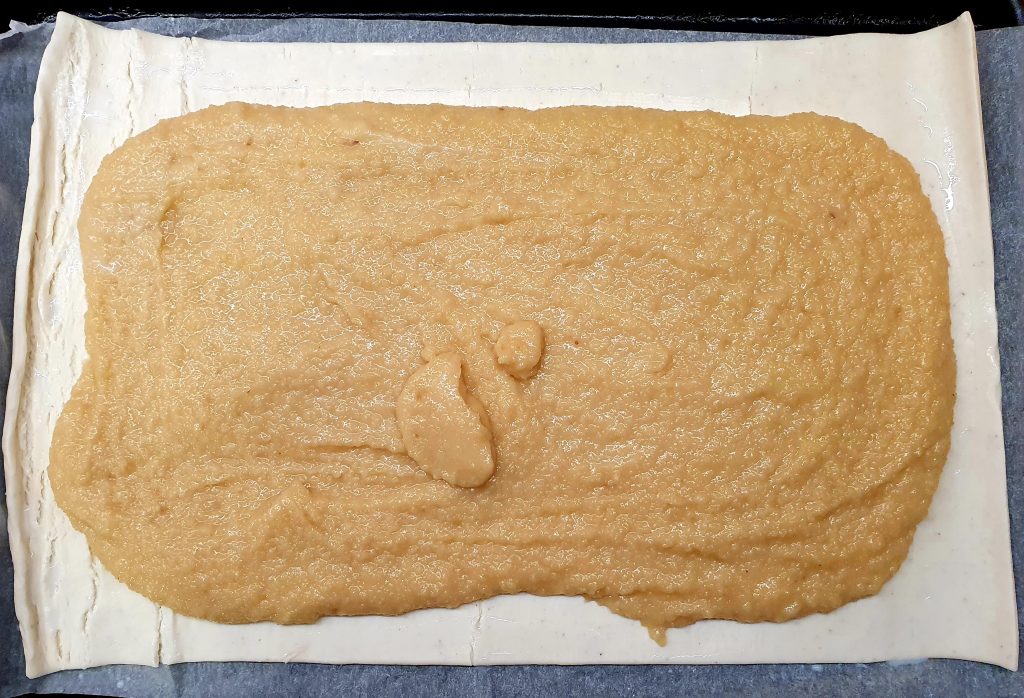
Cover with the other piece of pastry. Stick the sides all around and roll it a little to secure.
Spread a bit of milk above with a brush
With a fork, decorate all around and above. Make sure you make little holes so no air bubble blow the crust.
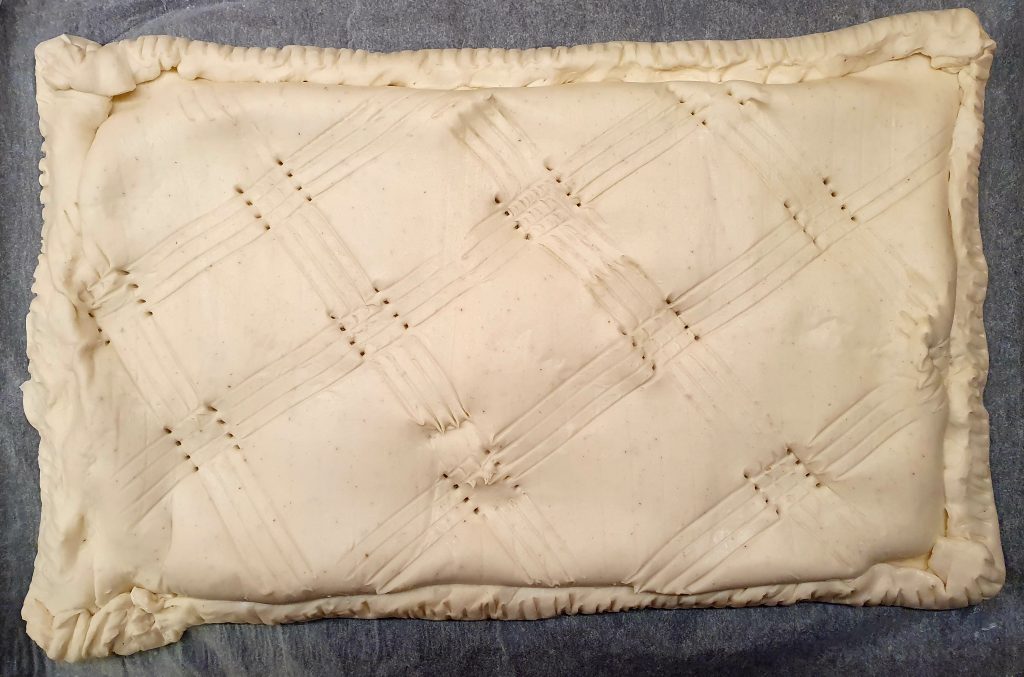
Put in hot oven at 210ºC for 30min.
Optional: as soon as it’s out of the oven, spread with a brush a mix of 2 table spoons of water (or milk) and 25g of sugar. This will give a bit of shine to the top crust.
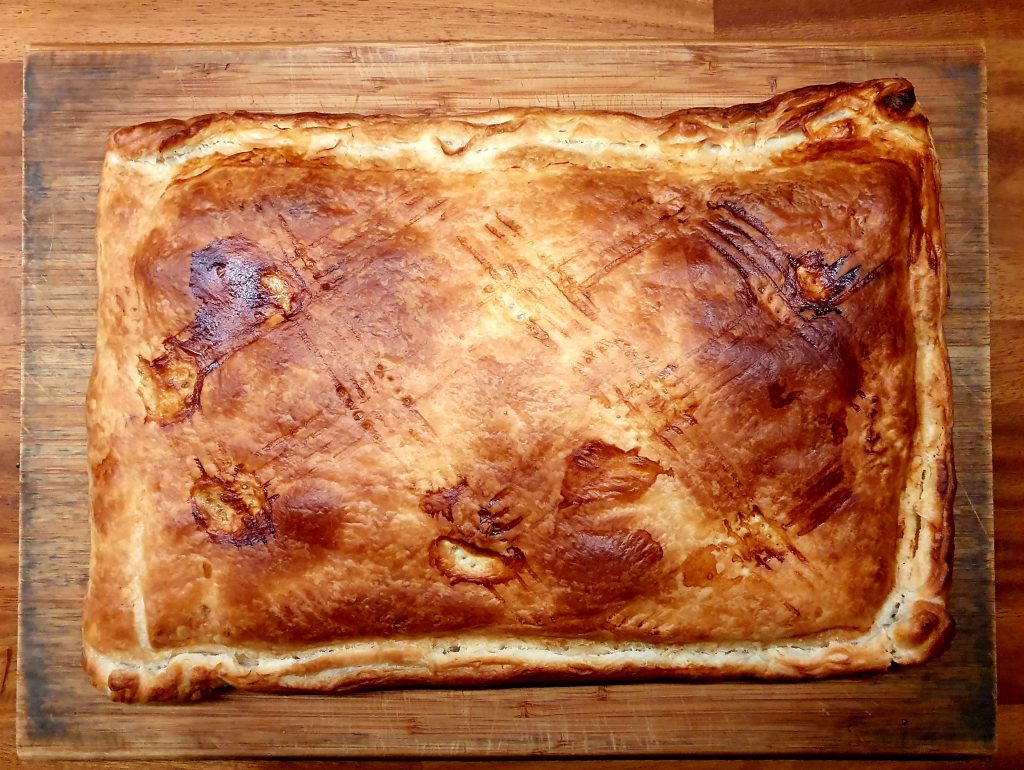
Enjoy !
